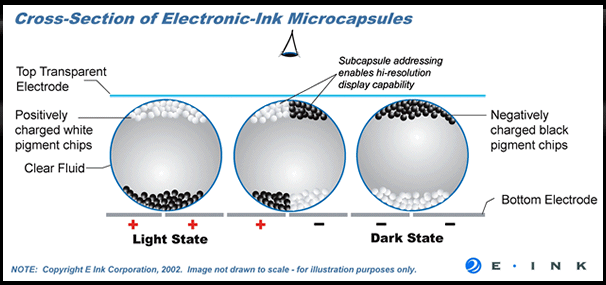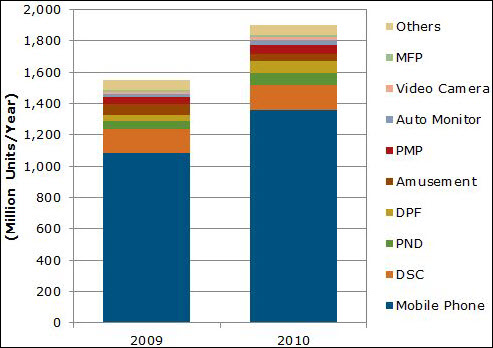The Elevator Pitch for the Future of ePaper

1. ePaper has been on the market for over a decade. Once seen as a fanciful marvel, it has now proved its commercial viability in a variety of ebook readers and other devices.
2. E Ink Corporation is now the dominant player in this market — most new announcements that relate to the use of ePaper technology relate to agreements with this corporation, an MIT Media Lab spin-off.
4. At the same time there is a lot of promising research heading out of other R+D labs that will extend the application of ePaper in unexpected and exciting ways.
Based on current utilization, deals signed for pending products, and numerous prospects, my prognosis for ePaper is extremely positive.
ePaper Overview
Probably no technology so captivates the imagination of publishing future-watchers as ePaper. I too can feel the allure. ePaper is not just some fancy computer screen, modified to convey a more “paperish” feel. ePaper is a flexible computer screen. It’s lightweight. In some cases you can bend it, you can roll it – hey, and it’s kind of like paper! (Note that the term ePaper is also being used by vendors of digital newspapers and magazines — described in my section on magazine publishing – who provide software that can display an accurate representation of the printed version of a publication. This section is concerned with the physical product called ePaper.)
The technology behind ePaper has been in the works for many years. The ever-somewhat-reliable Wikipedia informs that “electronic paper was first developed in the 1970s by Nick Sheridon at Xerox’s Palo Alto Research Center.” That’s over 30 years ago. (Xerox subsequently created a subsidiary, Gyricon, to commercialize the technology, but shut down the company in 2005.) Today’s hot player is the E Ink Corporation, “founded in 1997 based on research started at the MIT Media Lab.”
So the notion of ePaper has been kicking around for awhile. Getting it from the labs into usable products took some time. Most of those products today are either e-Book readers or signage.
As explained in The Economist article referenced below, “Electronic paper…relies on ambient light from the surroundings, just like ink on paper – so electronic-paper displays are sharp and easy to read in bright sunlight. Better still, once the screen has been set to display a page of text, no electrical power is needed to keep it there; power is consumed only when the screen is updated, which can extend the battery life of mobile devices…”
The E Ink website is well worth a visit to understand how this technology is beginning to move beyond eBooks.
I’ll admit to some early skepticism, but now it’s real. You’ve probably seen ePaper used for e-Book devices. My reservations were never with the ePaper as much as with the ebooks. I’ve seen ePaper used in signage in departments stores, able to instantly update merchandise and price information. Hmm. Looks good. More recently I’ve seen small chunks of ePaper on mobile devices — cellphones and the like. Whether ebooks become the hoped-for success that several vendors are banking on, ePaper clearly has an important role to play in the broad future of graphic communications.
Other vendors currently involved in researching and commercializing ePaper include Epson, Sony and Ricoh. Kent Displays is a leader in using LCD technology for electronic displays in commercial settings.
References for the Future of ePaper
1. One of the leading analyst organizations for display technology generally DisplaySearch. It provides a broad perspective on the display industry’s many sectors, illustrating just how tiny a segment e-paper comprises. A May 2011 press release reveals the full extent to which smartphones are now driving the small displays market.
2. Wikipedia has a strong entry on the technology behind “Electronic paper.”
3. Quantum Dots?
The Economist provides good coverage of the display industry. A June 2011 report discusses “quantum dots.” The focus in September 2010 was “energy-saving lighting”.
4. Sony Develops Video Display So Thin It Bends Like Paper
This is a May 2007 article, which explains: “In the race for ever-thinner displays for TVs, cellphones and other gadgets, Sony may have developed one to beat them all — a razor-thin display that bends like paper while showing full-color video.” And, four years later, another article: “Sony Demos Organic TFT-driven Flexible E-paper.”


